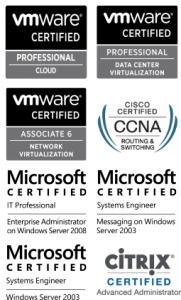Scenario
You’re running out of space on a computer running Server 2008 R2, but cannot find the Disk Cleanup tool. You know you can add it using Add Features > Desktop Experience, but you just want Disk Cleanup; not the other stuff.
Solution
You need to copy a few files from C:\Windows\winsxs.
Here is a batch script to copy the files to the correct locations, and also pin Disk Cleanup to the Start Menu (using VBScript called PinItem.vbs, shown below): [Read more…]


